The Sanctuary Wildlife Awards 2022: Celebrating Our Green Army
First published in Sanctuary Asia,
Vol. 42
No. 12,
December 2022
The Sanctuary Wildlife Awards 2022
Celebrating Our Green Army
Sponsored by DSP Investments Pvt. Ltd. Co-sponsored by Godrej Industries Ltd. and Morningstar India, CSR Partners IndusInd Bank, HT Parekh Foundation and Bajaj Electricals Foundation Associates Wildlife Conservation Trust and CarbonCopy
The Sanctuary Wildlife Service Awards honour eight men and women, from across India, who have unhesitatingly and bravely shouldered the burden of nurturing and protecting wild India. Their commitment and steadfastness to nature conservation show us how the monumental task of protecting our natural resources lies with each one of us. While their service contributions are impossible to justly chronicle, we present some of their inspirational stories. These are the heroes whose steps we hope many more will follow.
Lifetime Service Award
Protectors of wild habitats who have been in action for decades, inspiring millions, sparking movements, unearthing natural history knowledge, building conservation strategies, and shaping communities…
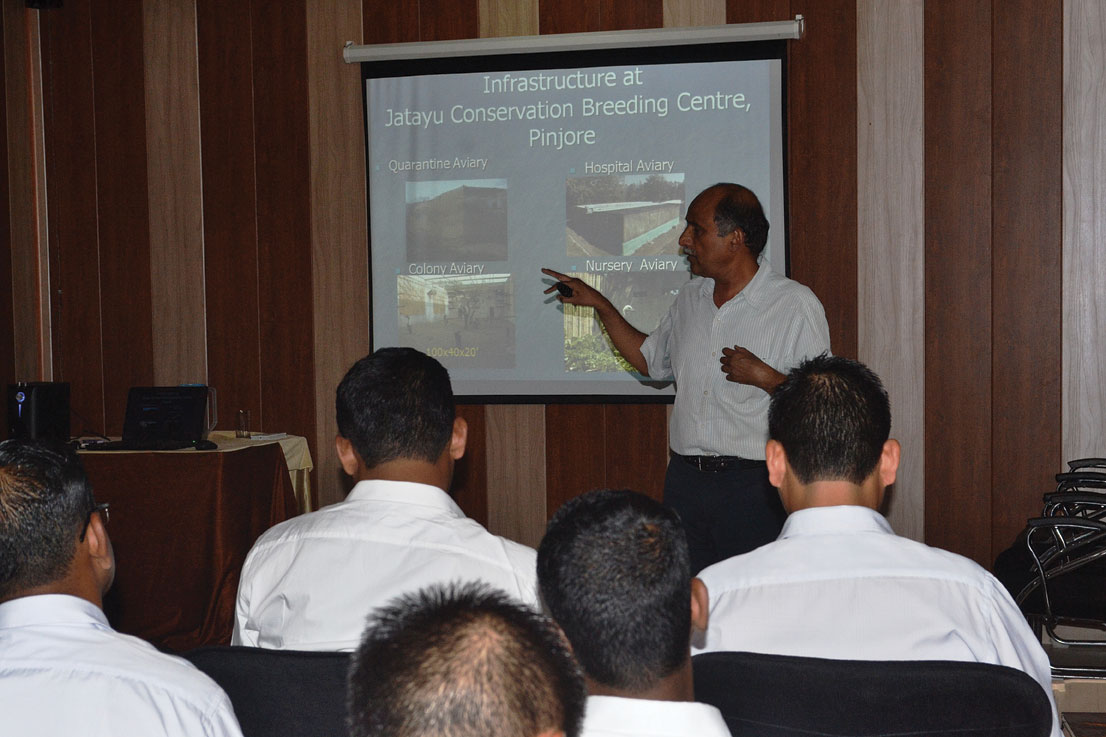
Dr. Prakash addressing young trainees at a centre set up under the Vulture Conservation Breeding Programme. Photo Courtesy: Vibhu Prakash.
Dr. Vibhu Prakash
Scientist, conservationist and species protector
Dr. Vibhu Prakash’s name is synonymous with vulture conservation in India. Stories from his childhood and youth contain some clues to his remarkable, 40-year journey of studying and conserving raptors in the country. A shy boy in Meerut who preferred the company of the plants and animals he encountered on his solo adventures outdoors, he was always encouraged by his mother to read books and articles on nature and was particularly influenced by the writings of Jim Corbett.
While he was a graduate student in the 1970s, he enjoyed birding along the Abu Nallah, a large drain that flowed through Meerut city. One day, he spotted a huge flock of European Starlings and, unable to identify them, he bought The Book of Indian Birds by Dr. Sálim Ali, but he didn’t find the birds within those pages either. Puzzled, he wrote to the celebrated ornithologist and was pleasantly surprised to receive a response. That was the beginning of his correspondence with the iconic Indian naturalist. After graduation, he decided to apply to the Bombay Natural History Society and got the job. His first posting at Point Calimere, Tamil Nadu, laid the foundation for his lifelong interest in raptors.
In the early 80s, he began working on his Ph.D. at the Keoladeo Ghana National Park, Bharatpur, Rajasthan, meticulously observing various species of raptors and recording their population changes and nesting performance over the years. He was awarded a Ph.D. degree by Mumbai University in 1990. In the early 90s, Dr. Vibhu Prakash and his team continued gathering data on vulture populations across national parks. If not for their constant monitoring, the sharp decline in numbers would have gone unnoticed. Racing against the clock, he and his colleagues initiated the vulture recovery programme, which became the guiding force for the Indian government’s response to the situation. He was involved in setting up the internationally acclaimed Vulture Conservation Breeding Programme with centres in Pinjore (Haryana), Buxa (West Bengal), Rani (Assam) and in Bhopal (Madhya Pradesh). Today, these centres manage more than 800 vultures. Additionally, 344 hatchlings have been successfully reared. This has been primarily instrumental in the recovery of three Gyps vulture species – the White-backed
G. bengalensis, Long-billed G. indicus and Slender-billed G. tenuirostris.
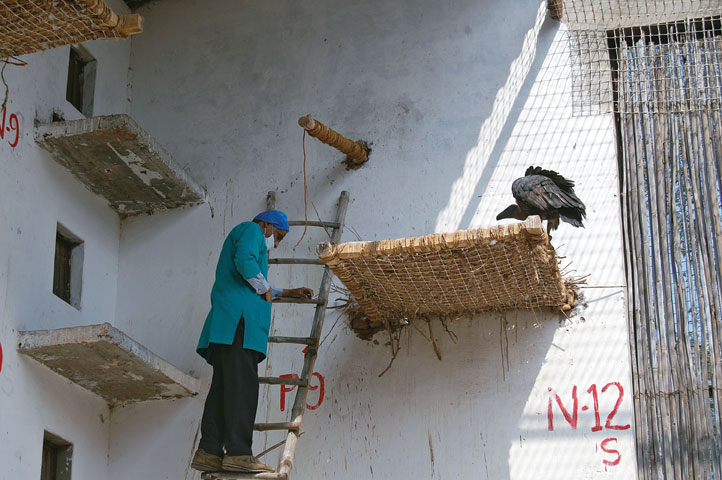
Dr. Vibhu Prakash climbs up to the nest of a White-backed Vulture G. bengalensis to remove its first clutch egg for artificial incubation and thus encourage the pair to lay more eggs. His efforts have helped secure the species’ population in India. Photo Courtesy: Vibhu Prakash.
Dr. Prakash played an instrumental role in the banning of veterinary use of diclofenac – the drug that caused the decline in vultures. With over four decades of raptor studies and vulture conservation behind him, he continues his vital work in the field. Today he is a Ph.D. guide for students at the Mumbai University. His wife Nikita works shoulder to shoulder with him at Conservation Breeding Centres and his two sons, Rishabh and Saurabh, though engineers by profession, are very keen on raptors too.
Dr. Prakash has been the Deputy Director and Principal Scientist of the Bombay Natural History Society since June 1995. He serves on various national and international committees, organisations and groups regarding the protection of raptors in general and vultures in particular. Besides which, he has also been extensively featured in various renowned media platforms.
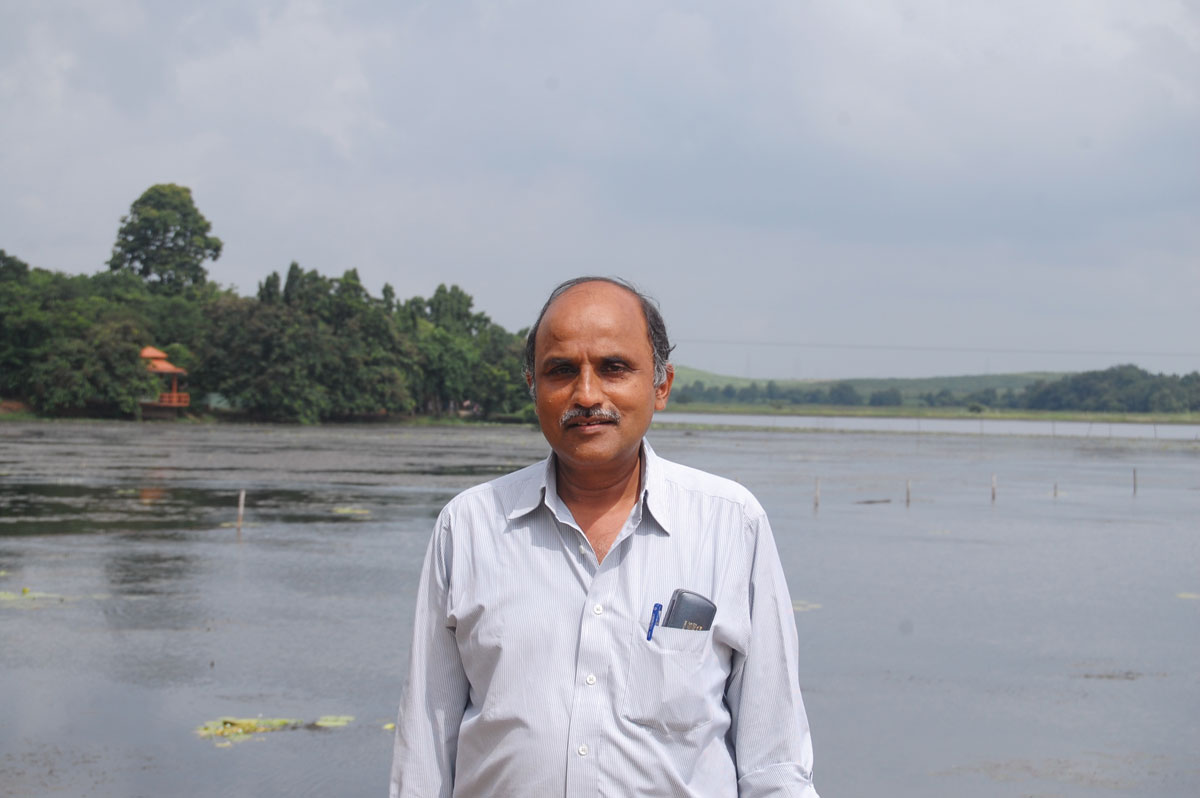
Dr. Prakash notes morphometrics of a Red-headed Vulture Sarcogyps calvus. He has four decades of raptor studies and vulture conservation behind him. Photo Courtesy: Vibhu Prakash.
Dr. Prakash is a national treasure, as valuable to conservation science as our raptors are to our ecosystems. For his life’s work of pioneering scientific research and timely, incisive conservation efforts to protect our vultures, we honour him.
Wildlife Service Awards
Inspired wildlifers, forest employees, researchers, villagers… anyone currently involved with nature conservation and the battle to protect our biosphere. Sanctuary searched for true heroes who display extraordinary courage, dedication and determination and set high personal standards for others to follow…

Rituraj has travelled to Antarctica as well as the North Pole, expeditions that led to his own journey as a climate activist. Photo: Rituraj Phukan.
Rituraj Phukan
Climate warrior, wildlife protector and adventurer
Robert Swan, the first man to have walked to both the North and South poles, made a crucial observation: The greatest threat to our planet is the belief that someone else will save it. Rituraj Phukan, who was invited for an expedition to Antarctica by Swan himself, and later accompanied him to the North polar region too, certainly does not hold this belief, and has been working tirelessly for the planet.
The extreme environment of Antarctica was the beginning of Rituraj’s own journey as a climate activist. From the polar frontiers of the Arctic and Antarctic, to the peaks and valleys of the Himalaya, and all across India, Rituraj had been observing the cascading impacts of climate change. There was no way he could be a silent witness. He quit his government job, and became a staunch, vocal advocate for the environment, and has been working as a climate activist since then. Rituraj wears multiple hats to drive forward awareness about the climate crisis. He is the Founder of the Indigenous People’s Climate Justice Forum, and Secretary of the Forest Man Foundation. He is a member of the International Union for Conservation of Nature, and sits on the board of civil society groups in the Americas, Europe and Australia, and a European Climate Pact Ambassador. He is the Chief Operating Officer for Walk for Water, the National Coordinator for Biodiversity, Climate Reality Project India and Secretary General of Green Guard Nature Organisation.
The global impact of climate change requires urgent global action and collaborations. Rituraj works with grassroots communities, students, businesses, legislators, bureaucracy, civil society and the media to create positive change. He was trained as a Climate Reality Leader by Nobel Laureate Al Gore and was featured in the former US Vice-President’s 2017 book An Inconvenient Sequel: Truth to Power.
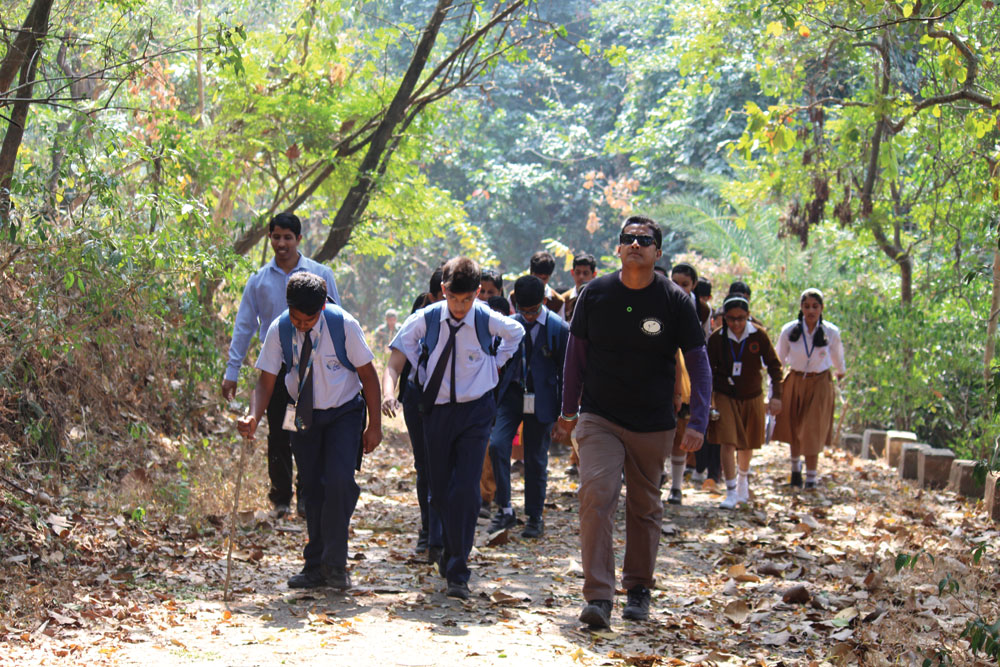
Rituraj Phukan conducts a nature trail for students in Guwahati, Assam. Through his speaking and teaching engagements, he focuses on warming, water and wildlife. Photo: Rituraj Phukan.
Rituraj is a regular op-ed contributor on the climate and biodiversity crises for The Assam Tribune, and in publications across the world including the American Journal of Economies and Sociology, Earth Journalism Network, The Manila Times, Sanctuary Asia and Sanctuary Cub, Christian Science Monitor, Igniting Minds, and more!
Through his untiring speaking and teaching engagements in over a hundred educational institutes and at international fora, Rituraj focuses on warming, water and wildlife. He believes that “Water is the local issue of global climate change, for people and for biodiversity”.
A long-term vegan, Rituraj practices what he preaches and advocates that all of us begin by practising one positive way to reduce our negative impact on the planet. “If a lot of us do even a little, a lot gets done,” he says.
Ramana Athreya
Ecologist, conservationist and astrophysicist
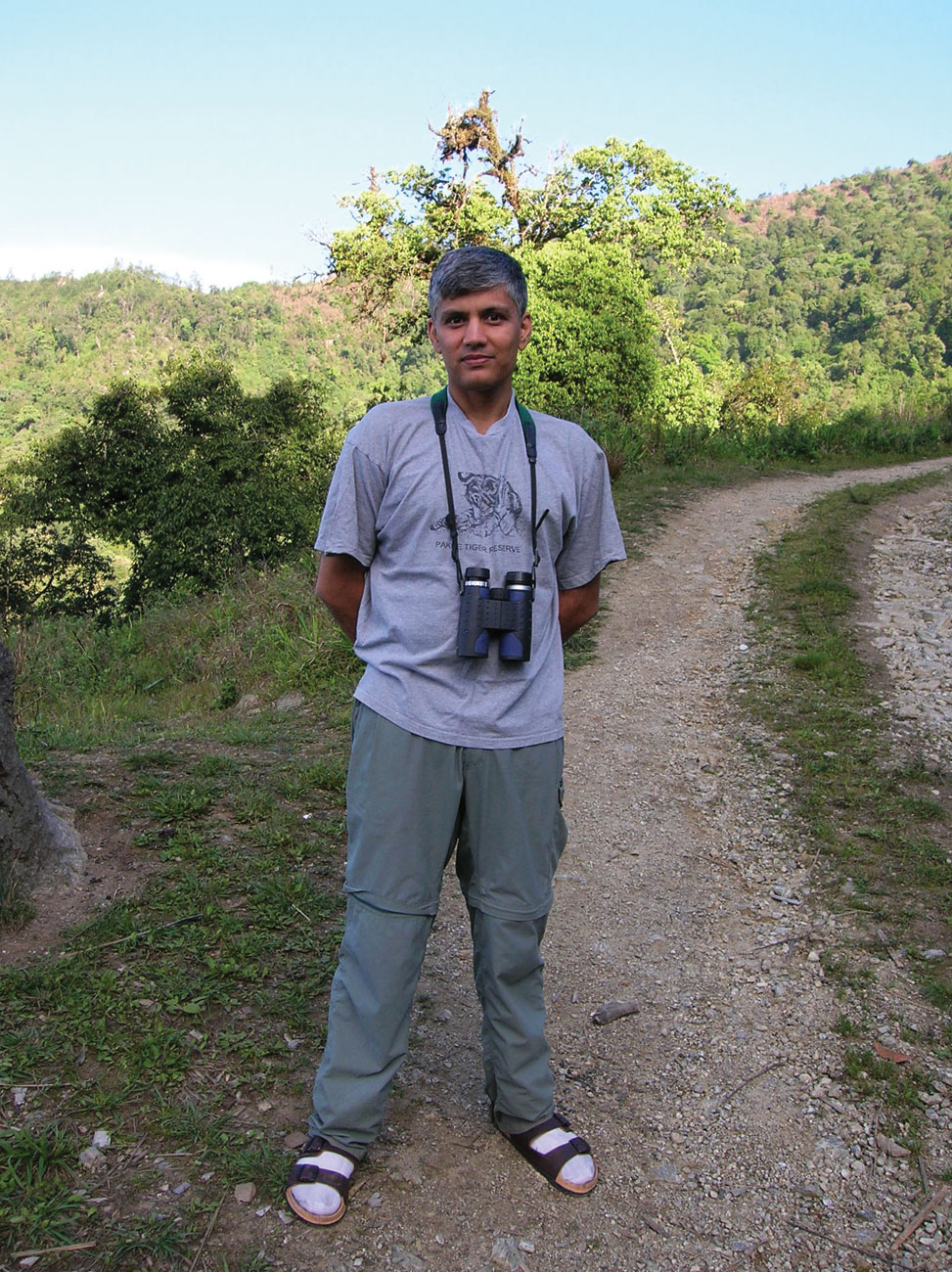
Dr. Ramana Athreya has been mentoring the Bugun tribal community to involve them in protecting the Bugun liocichla, a bird he first described in 2006, and its habitat. Photo Courtesy: Ramana Athreya.
As an astrophysicist, peering at the sky to unravel the universe’s mystery is second nature for Ramana Athreya. His profession melded seamlessly with his vocation – the study of bird life, and the related fields of ecology and conservation. One of his most important contributions to our knowledge of avians was the description of a new bird species – the Bugun liocichla – in Arunachal Pradesh in 2006. The discovery is a feather in the cap for India too as it was the first bird discovered since India’s Independence! The striking, multi-coloured bird is seen in select pockets of the Eaglenest Wildlife Sanctuary and Singchung Bugun Village Community Reserve (SBVCR), where Ramana works. Its conservation is of paramount importance as it has been classified as critically endangered.
In an effort to conserve the Bugun liocichla and its habitat, Ramana has been mentoring the Bugun tribal community. He believes wilderness conservation will succeed only if the needs and concerns of the local community are part of the solution. The community is a key player for the SBVCR, which won the India Biodiversity Award 2018 for its efforts to protect the Bugun liocichla. Ramana also received the Whitley Award in 2011 for his community wildlife conservation work. Fittingly, on the occasion of the 11th Conference of Parties to the Convention on Biological Diversity conducted in Hyderabad in 2012, the Indian Postal Department released a commemorative stamp with Bugun liocichla to highlight the need to protect our biodiversity. Ramana is a Trustee and Coordinator of Biodiversity Research & Conservation EcoSystems-India, Guwahati. He has also been an Associate Professor of Physics and Biology at the Indian Institute of Science Education and Research (IISER) Pune since 2009. Ramana and his Ph.D. students engage in ecology and astronomy research in his molecular-ecology lab. He is a vital bridge between academia and on-the-ground conservation in Arunachal Pradesh. Ramana works hard to untangle the complexities of biodiversity conservation and community sustenance and is regularly invited to speak at national symposiums, conferences, and different universities in India. Deeply involved in science outreach work, he spends considerable time engaging with young men and women in colleges and schools across the country.
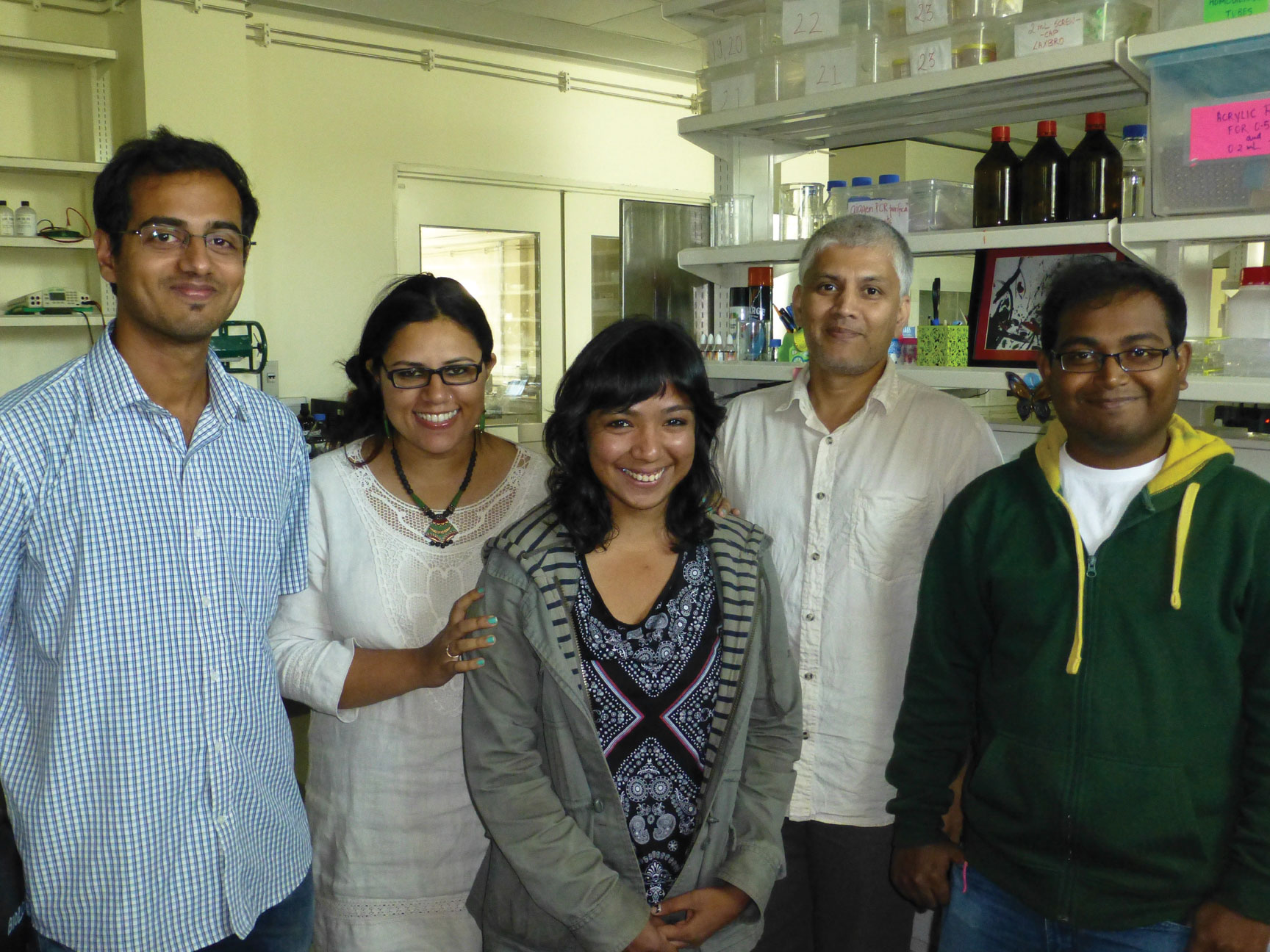
Dr. Ramana Athreya with his students in his molecular-ecology lab at the Indian Institute of Science Education and Research (IISER), Pune. Photo Courtesy: Ramana Athreya.
What began as a beautiful birdwatching holiday to Arunachal Pradesh for Ramana has turned into his life’s work and mission. Ramana’s spirited fight for the natural world and for the dignity and sustenance of local communities is a beacon in the world of today.
Arun Venkataramanan
Conservationist, educator and forest-nurturer
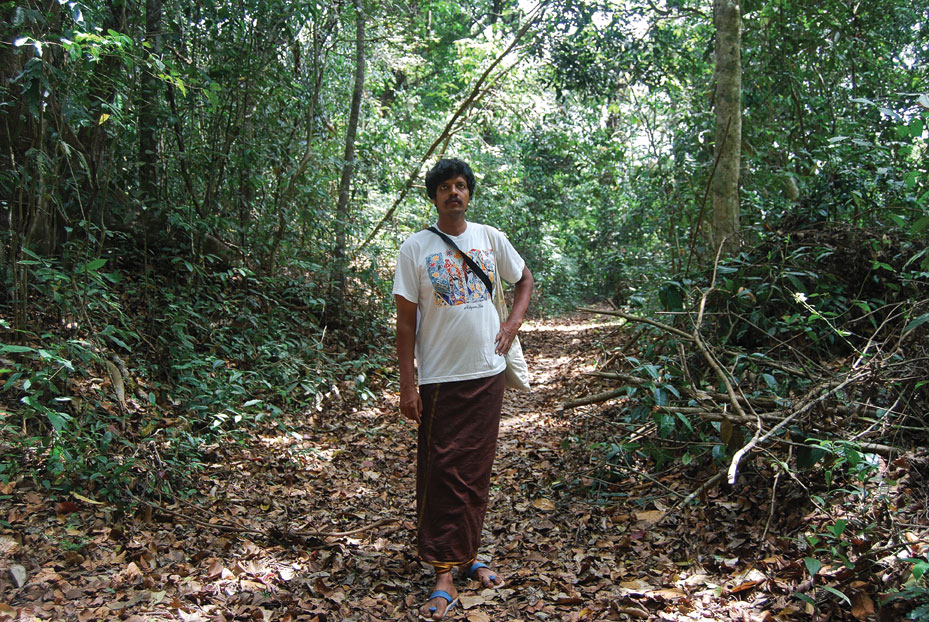
Committed to safeguarding nature, Arun Venkataramanan and his team reguarly conduct education activities, reforestation drives and skill share workshops for locals. Photo Courtesy: Arun Venkataramanan.
It was when the electronic boom began on the cusp of the Internet era that Arun, a young engineer in Mumbai, joined members of the Bombay Natural History Society on long forest walks. The interactions led him to ask: “How should I spend my life’s energy?” The answer came from within him and since then nature conservation has remained his true calling.
In 1997, he began teaching Environment Education at the Krishnamurti Foundation School in Chennai, where he remained for 12 years. This shifted his worldview. In 1997, he also joined the Students’ Sea Turtle Conservation Network (SSTCN), becoming the group’s coordinator in 2002. With the SSTCN, Arun helped protect the eggs of olive ridley turtles that nested on Chennai’s beaches, safely releasing newborn hatchlings, creating awareness on environmental issues through discussions with groups during turtle walks every weekend, and by speaking with children and their teachers in schools and colleges.
In 2009, Arun and his wife Poornima moved to Thiruvannamalai with their two children. Committed to safeguarding nature, the couple, with like-minded friends, launched a project called ‘The Forest Way’ where they ran environmental education activities, reforestation drives on the Arunachala Hill, and skill share workshops for locals. They also began a small alternative school for children from all socio-economic backgrounds in Thiruvannamalai. Called the Marudam Farm School, it teaches life skills including farming, gardening, carpentry, pottery, tailoring, cooking… along with academics. The school has been written about in many magazines and journals for its emphasis on sustainable living and its holistic approach to education.
Arun also conducts birding trips, nature education camps, tree walks and environmental education programmes for groups seeking to connect with nature. A man of many parts, he also happens to be the Secretary of the Annamalai Reforestation Society since 2018, and has been its treasurer since 2012. He currently collates and documents the biodiversity of the region he knows so well, through the India Biodiversity Portal, e-Bird and inaturalist.
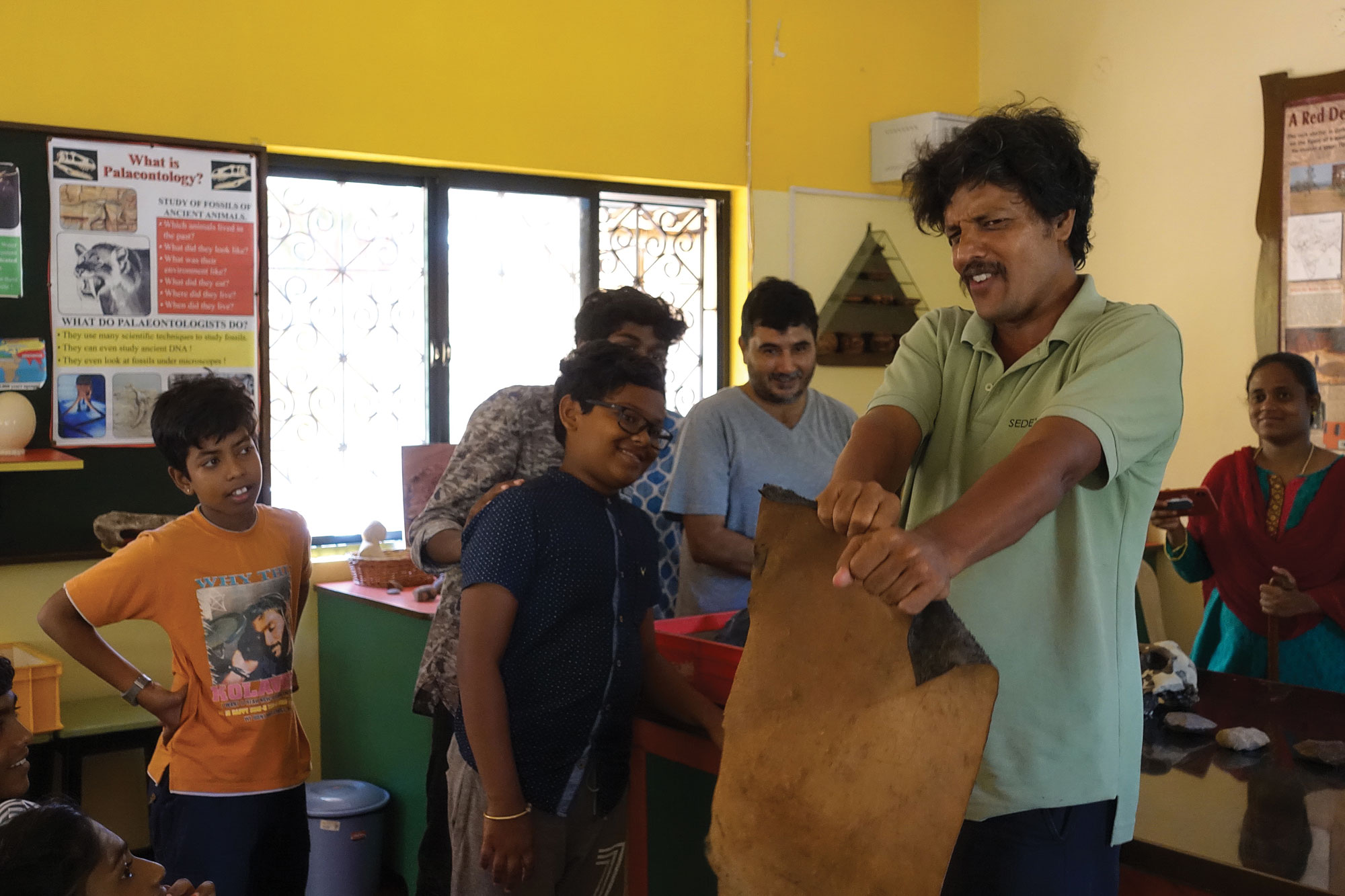
An alternative school founded by Arun and his friends for children from all socio-economic backgrounds emphasises sustainable living and has a holistic approach to education. Photo Courtesy: Arun Venkataramanan.
The values that Arun, his wife and their team have carefully instilled in so many youth have clearly made a deep impact on the couple too. Attempting to walk lightly on the Earth, leaving behind the smallest possible ecological footprint, the family lives in a thatched house on an organic farm powered solely by solar energy. Arun uses public transport whenever possible and has not taken a flight in 25 years!
This man, in so many ways, is years ahead of his time, with each day a sincere pursuit in shifting perspectives. Without exaggeration he has dedicated his entire life to protecting and safeguarding not just nature-in-a-silo, but our collective future writ large.
Panchami Manoo Ukil
Birder, author and conservationist extraordinaire
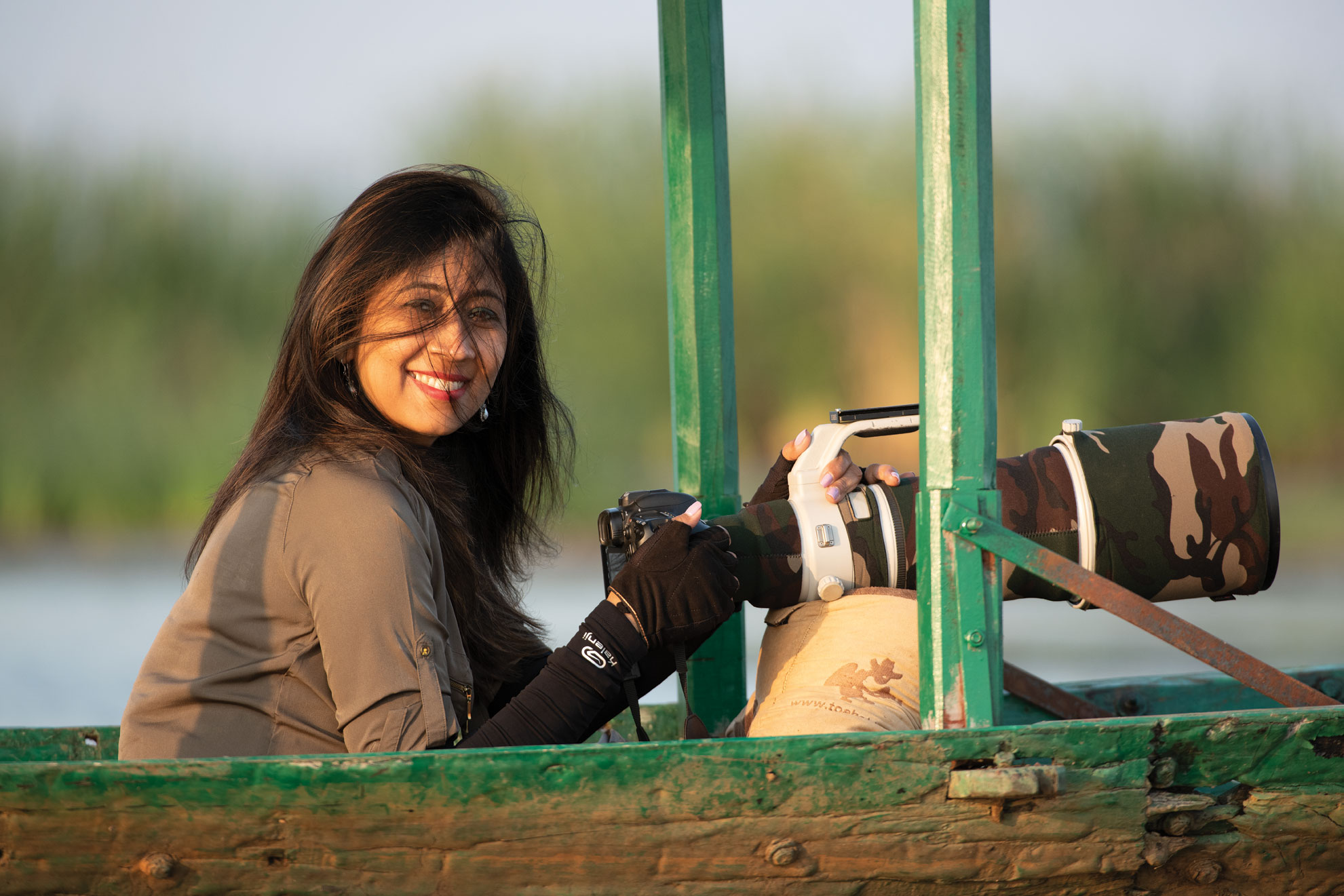
By conducting the first ever bird walks in Odisha, Panchami Manoo Ukil helped create a culture of birdwatching in the state. Photo Courtesy: Panchami Manoo Ukil.
The ancient Haudenosaunee philosophy of the Iroquois in North America flows beautifully through Panchami Manoo Ukil’s life: ‘decisions we make today should result in a sustainable world seven generations into the future’. Her parents, Panchami, and the hundreds of children and adults with whom she interacts bear this philosophy.
Panchami inherited her love of nature from her parents who were avid lovers of the outdoors and looked upon plants like children to be cared for and nurtured. Their lifestyle centred on living in harmony with their surroundings, as does Panchami’s.
Her brainchild ‘The Bhubaneswar Bird Walks’ began in 2012, and, later, she co-founded ‘Song of the Wild’ to work on deeper issues of wildlife conservation. With the first ever bird walks in Odisha, she helped create a culture of birdwatching in the state. The success of the initiative enhanced avian studies and field work in the region – for instance, the discovery of nesting of the endangered Indian Skimmers Rynchops albicollis, in Mundali.
Fondly known as Pakhi Panchami (Birdie Panchami) in Odisha, she works with young and old alike to promote knowledge, compassion and coexistence with nature. Panchami, an educationist, is Vice Chair and School Leader at the DN Wisdom Tree Global School. She introduces children to plants, birds and animals, and explains how the intricate web of life links us all. She believes that creating awareness in children is a good way to bring adults into the arena of nature conservation.
A part of Panchami’s heart belongs to Mangalajodi, the wetland on the northeastern fringe of Chilika Lake. Working with local bird guides and boatmen down the years, she successfully managed to get Corporate CSR and community leaders to support and inspire these former poachers so that they continue to be protectors of the local biodiversity. She had understood that this would only be possible if the community became the direct beneficiaries of biodiversity restoration.
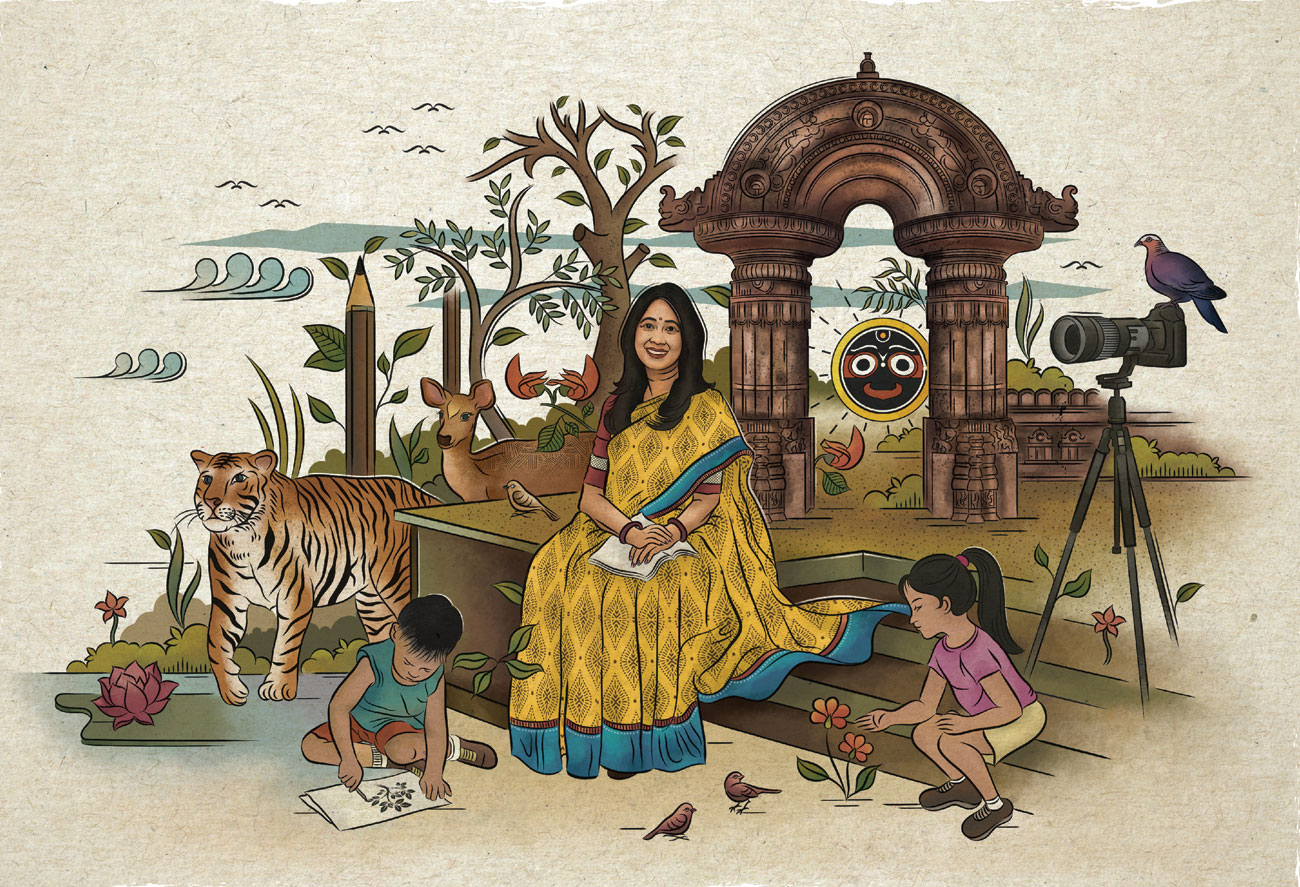
This illustration by 25-year-old wildlife cartoonist Sudarshan Shaw is a lovely representation of all the things that Panchami loves – birds, wildlife, children, photography, writing and her state Odisha. Photo: Sudarshan Shaw.
Her writing and lobbying opened up Mangalajodi to the outside world and helped turn local boatmen into expert bird guides, who now find their economic and social circumstances greatly improved thanks to increased visitation that often caused boats and homestays to be overbooked! Most houses in Mangalajodi now have functional toilets, solar power, and safe drinking water. A community centre was established and well-wishers soon made better equipped boats, binoculars and bird guidebooks available through Odisha’s many active NGOs who help upskill local youth.
Panchami is currently working on a book on the birds of Odisha. She is undoubtedly one of her state’s finest bird ambassadors with a deep commitment and belief that the youth in the fishing community are destined to be the most effective conservationists of tomorrow.
Shabir Husain Bhat
Naturalist, guide and wild whisperer
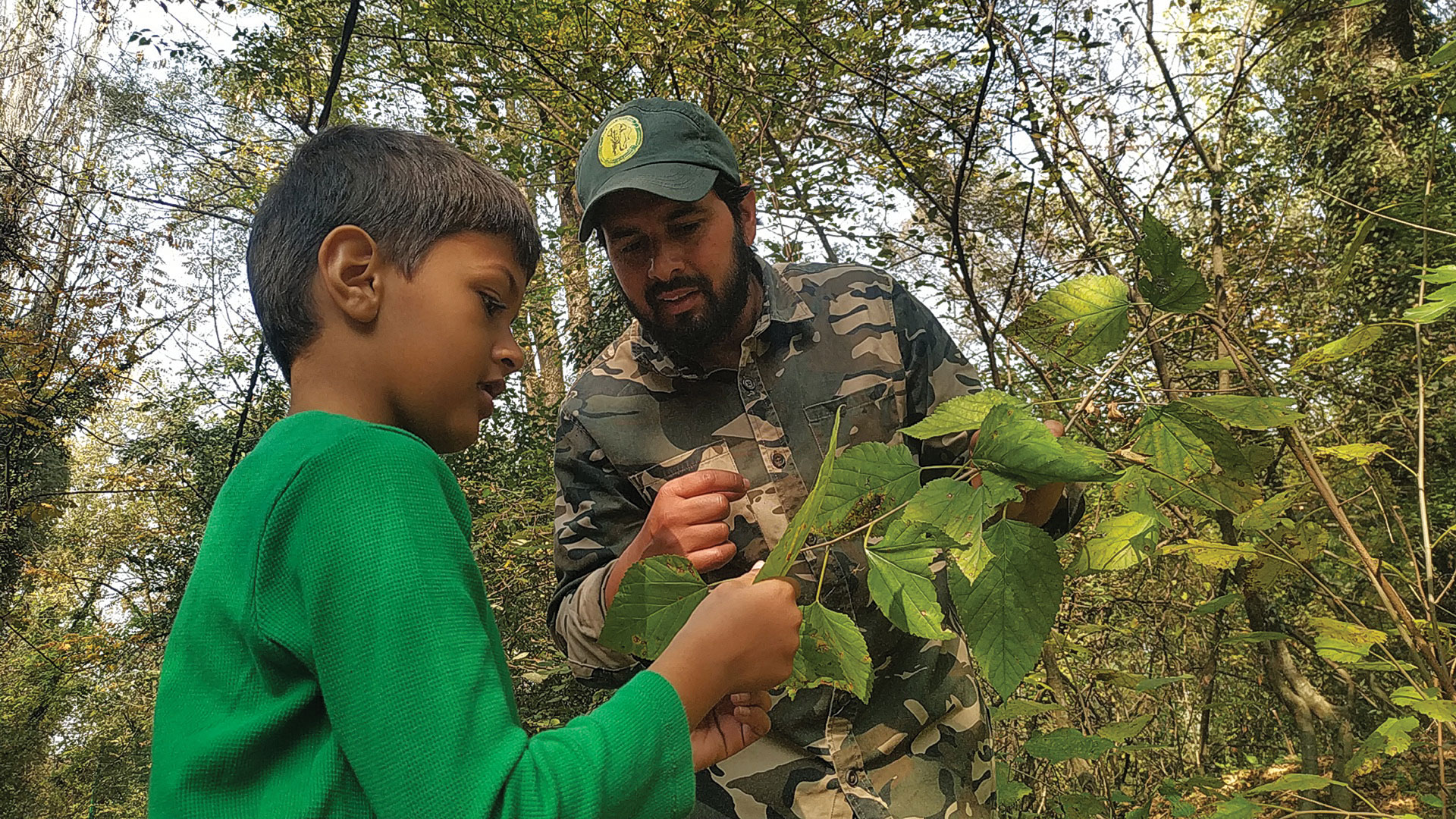
Even a short walk with Shabir through the magical forests of Dachigam reveals the wonders of the park. No wonder, visitors who have walked with him call him the ‘Encyclopaedia
of Dachigam’. Photo Courtesy: Shabir Bhat.
Think Jammu and Kashmir, and views of vast, snow-capped mountains and deep, unexplored forests spring to mind. And now, for us at Sanctuary… Shabir Husain Bhat!
A passionate naturalist born in Srinagar, he is one of Dachigam National Park’s most dedicated conservationists. Over the past 15 years, he has worked as a naturalist-guide, continuing an unbroken tradition passed down from the likes of the late Qasim Wani (Lifetime Service Award 2001 winner), Abdul Rahman Mir and Nazir Malik (Wildlife Service Awardees 2003 and 2016 respectively).
Even a short walk with Shabir through the magical forests of Dachigam, watered by the glacial Dagwan river, reveals the wonders of the park – the ‘old man’s beard’ Chionanthus virginicus billowing wispily by the path, bear droppings strewn on the forest floor and mulberries for them hanging on welcoming branches! Visitors who have walked with him call him the ‘Encyclopaedia’ of Dachigam.
Even as a child, Shabir was drawn to wildlife. He vividly remembers trekking mountains for birding and visiting the ‘Brein Nishat Conservation Reserve’ near his home to watch wildlife.
But it was one specific animal that gave Shabir definitive purpose and direction. And the Dachigam National Park was its only home. To date, the critically endangered and enigmatic hangul deer, or Kashmir stag Cervus hanglu hanglu (Sanctuary Vol. III No. 2, April/June 1983) continues to be the focus of his life. And joining the park as a naturalist and guide was the way he chose to wake up and sleep everyday in the proximity and service of the animal he loved.
Friends and distant family continue to exhort him to seek more lucrative jobs, but his resolve remains unwavering. The sight of elusive females with fawns, he says, is all the motivation he needs. His day is, of course, replete with creatures and plants he loves – the Himalayan black bear, for its critical role in seed dispersal in the forests, the golden-yellow autumn leaves of the mulberry plant, or the mighty oak and walnut forests that so typify Dachigam.
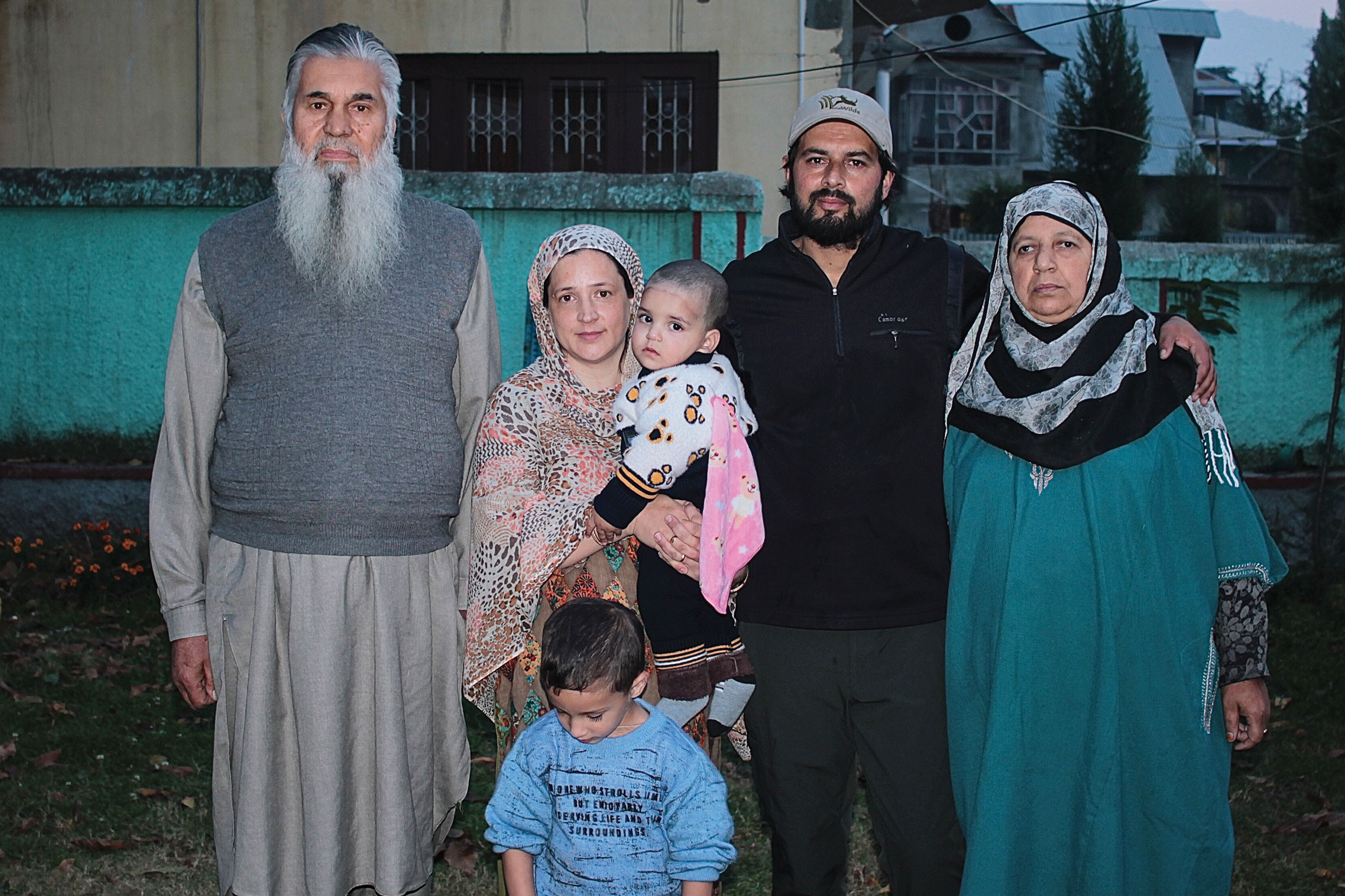
Shabir, seen here with his parents, wife and children, is fortunate to have the unconditional support of his immediate family for his life’s work. Photo Courtesy: Shabir Bhat.
Shabir is fortunate to have the unconditional support of his immediate family for his life’s work. A visionary, he insists that the future of Dachigam and its natural wonders depend almost entirely on support from the hardworking communities living in Dachigam’s periphery. This is why we identified him as one of those chosen to be supported in every way possible. A son of the soil, he says with conviction born of experience that to conserve the endangered and not-so-endangered species of Dachigam, he intends to study their biology, ecology and behaviour.
Walking beside their tracks in the sand, lightly leaving his own prints behind, Shabir Husain Bhat belongs to Dachigam and Dachigam belongs to him. Like the hangul and Himalayan black bear, this jungle is
his home.
Young Naturalist Award
Driven youth leader who sets an example for his or her peers and older generations alike, through a thirst for knowledge and conservation entrepreneurship… motivated by hopes of a sustainable future on planet Earth.
Munmuni Payeng
Conservationist, public speaker and leader

Aware of the vital importance of involving the young from near infancy, Munmuni routinely organises school and community awareness programmes in collaboration with the Green Guard Nature Organisation. Photo Courtesy: Munmuni Payeng.
When your parents’ legacy is an over 40-year-old thriving forest, it is little wonder that your pockets are full of seeds, your head full of big ideas, while your feet remain planted firmly on the ground. That’s 24-year-old Munmuni Payeng – daughter of ‘Forest Man of India’, Jadav Payeng (Sanctuary Vol. 32, No. 12, December 2012), who strives for ordinary things: to be a good person, work hard, help people and rewild Earth by working with nature. Armed with such seemingly humble aspirations, she makes the extraordinary possible.
She is currently one year into a rewilding mission in collaboration with local community members who have bought into her family’s dream of mothering a forest of one million native trees on sandbars close to the Molaikathoni Forest.
As the Secretary of the Forest Man Foundation, she gives direction to the environmental and social initiatives for communities living close to the parcel of land they have identified. She is also a founding member of Seuj Dhoroni (Green Earth), that communicates nature conservation at the grassroots level. Aware of the vital importance of involving the young from near infancy, she routinely organises school and community awareness programmes at Assam’s Majuli and Jorhat districts in collaboration with the Green Guard Nature Organisation.
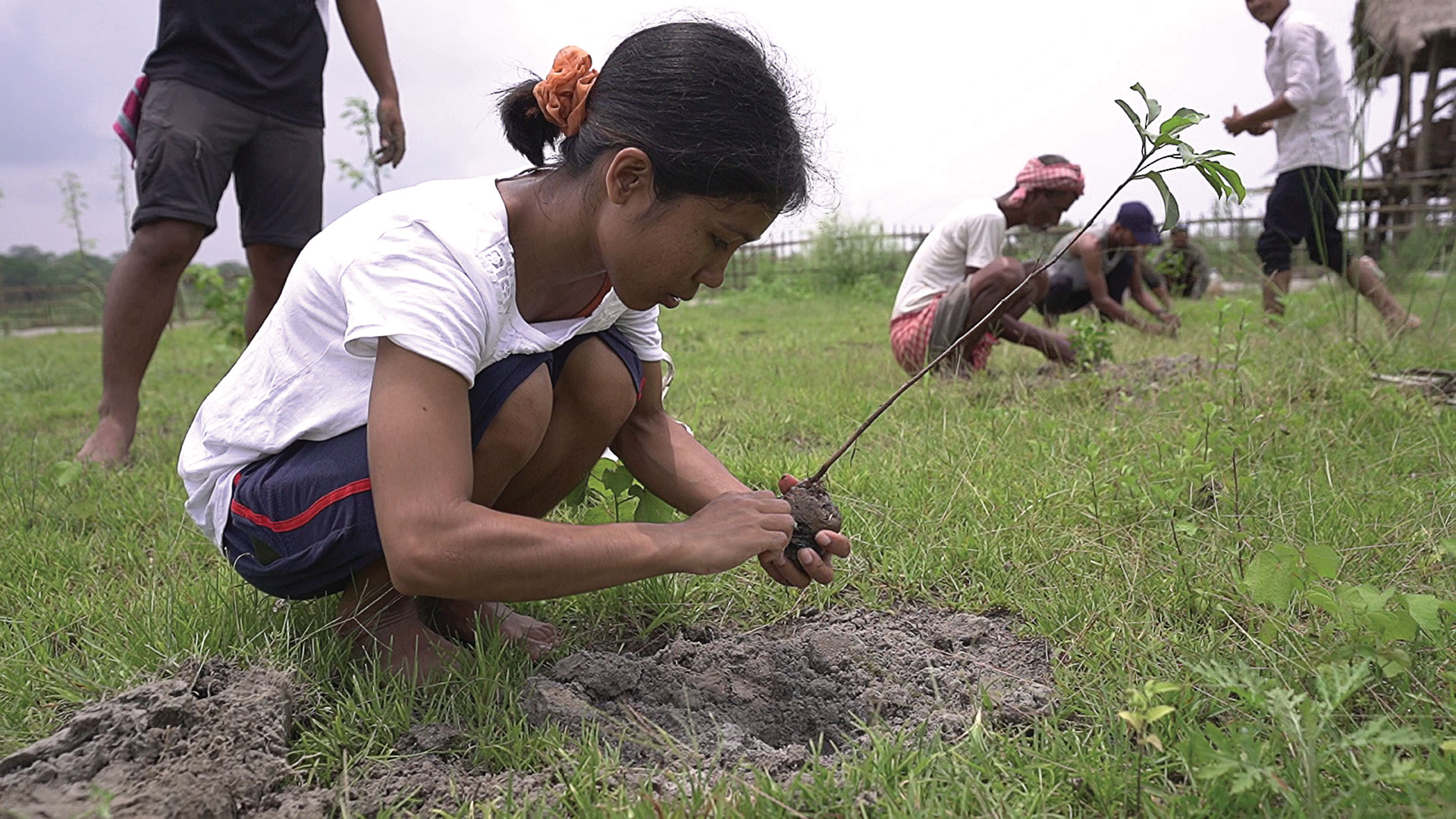
Munmumi Payeng is currently one year into a rewilding mission in collaboration with local community members who share her family’s mission of creating a forest of one million native trees on sandbars close to the Molaikathoni Forest. Photo Courtesy: Munmuni Payeng.
In 2020, after seeing a post on Facebook about Nizora Phukan’s mission to walk from Charaideo to New Delhi – to raise awareness about nature conservation, Munmuni reached out to the young environmentalist and decided to accompany her between Jorhat and Guwahati, a distance of over 300 km. This offered her a unique platform to share her own vision and plans to conserve nature with an increasingly active following.
With her two younger brothers, cousins and friends she works day after day on their ambitious project to see a natural forest of one million trees emerge as a way of assuring a home to wild species being edged out from Assam’s fast-vanishing wilds. With them in their mission are members of the Bihari, Mising, Ahom and other adivasi communities. Scattered among the lakhs of trees that have already established themselves are Bombax ceiba, mango, jackfruit, and Indian jujube. Undeterred by the frequent flooding in the area and the welcome rearranging that wild elephants tend to do, the group is happy to continue undeterred, knowing that the legacy gifted by her father will continue to grow because she will never give up.
Green Teacher Award 2022
Suprabha Seshan
Educationist, forest custodian and earth doctor
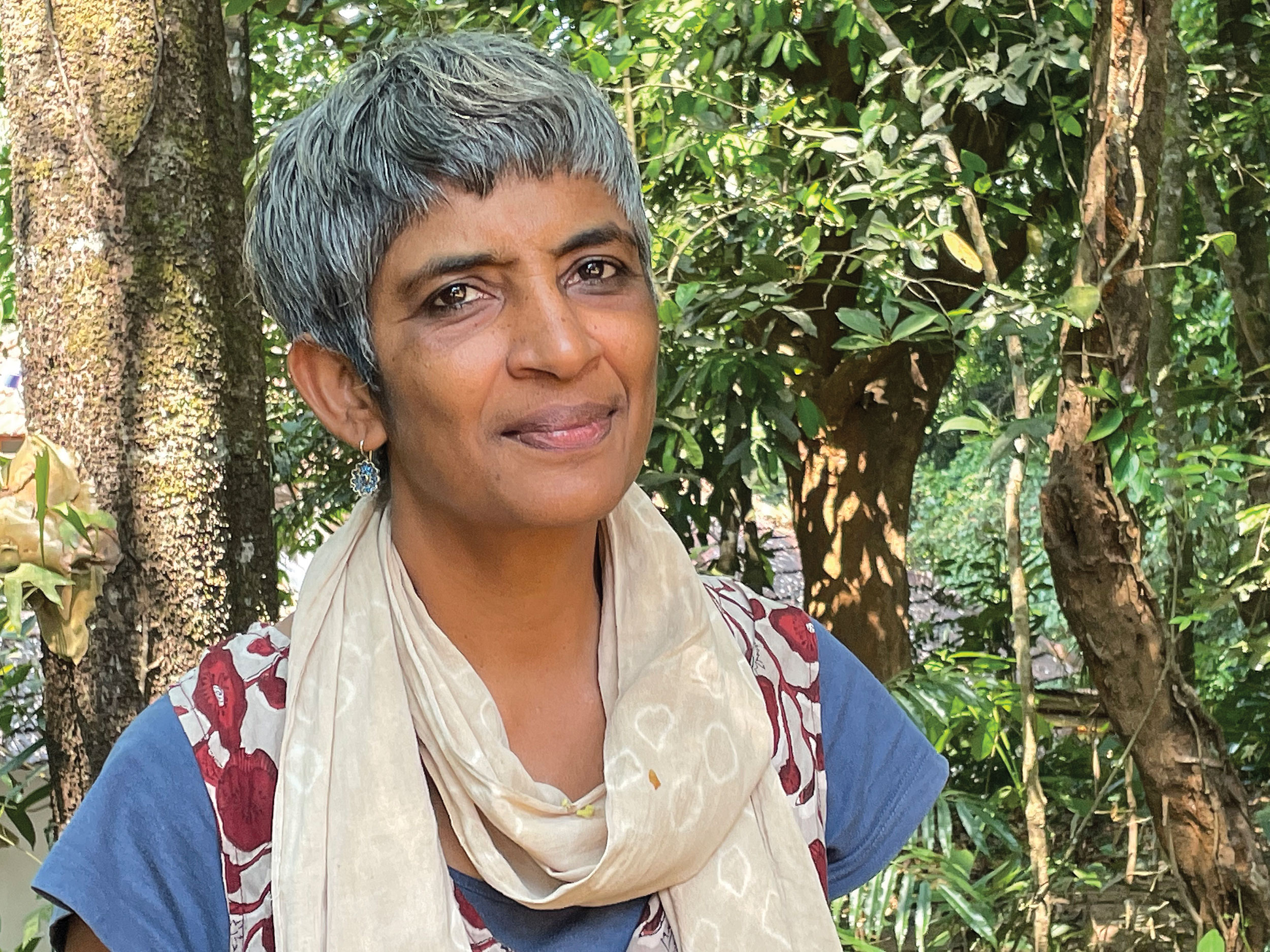
As a long-term custodian of the Gurukula Botanical Sanctuary in Wayanad, Kerala, Suprabha Seshan undertakes much of its educational and outreach activities, including supporting restoration initiatives in the
Western Ghats. Photo Courtesy: Suprabha Seshan.
Since childhood, Suprabha has experienced a deep sense of belonging with the natural world. Encouraged by her family and together with various peers, she explored wild places throughout her youth. She read and wrote on the subject, prepared appeals to save wildlife, and routinely rescued injured and orphaned animals. She also organised hikes and nature activities for younger kids at school.
After obtaining her degree in Earth Studies from the U.K. in 1989, Suprabha spent the next two years travelling in search of wildness and wildernesses. When she eventually returned to India, with a few friends, she visited the Gurukula Botanical Sanctuary (GBS) – a community-led conservation centre in Wayanad, Kerala. Founded by the late Wolfgang Theuerkauf, GBS focuses on the rescue and protection of endangered plant species of the Western Ghats. Scheduled to spend 10 days there in the winter of 1992, she discovered she had found her calling in life – “rainforest conservation”. She and her friends extended their stay. As for Suprabha... she never left!
Today, as a long-term custodian of GBS, she undertakes much of its educational and outreach activities, including supporting various restoration initiatives in the Western Ghats. She is one of the co-founders of GBS’s School in the Forest, a broad collaborative initiative with educators across the region. A creative and enthusiastic educator, Suprabha has also been a core member of a team that runs ‘Landscapes and Lifeskills’, a five-month programme for young adults, many of whom have embraced vocations in restoration and conservation.
Suprabha is devoted to protecting old growth forest and to recovering degraded land to forest. She and her colleagues have painstakingly nursed a rainforest habitat with a myriad plant species back to life, and speak of their work as “ecosystem gardening”. Every such recovery contributes to restoring the micro-climate and raising the water table. As the rewilding process unfolds, rare native animals, birds, and insect species – many highly endangered – have begun to return. Members of local communities, who are still intimate with the natural world, discover how they too can further contribute to, and benefit from, such self-sustaining ecological nurturance practices.
Through her life, Suprabha has designed and directed several research and restoration projects, both at GBS and at other botanical wonderlands such as the famous Mukurthi National Park and the Tala Cauvery Temple Sanctuary. She is now working on a ‘Canopy Care’ project, focusing on the tender plant species of the rainforest canopy. For her missionary work, Suprabha received the prestigious Whitley Award in 2006, which she accepted on behalf of the Gurukula Botanical Sanctuary.
Proof of the regard with which Suprabha is held by her contemporaries can be gauged by the many roles she plays with different environmental organisations and collectives: She is a co-founder of the Munnarakkunnu Trust in 1996 and since 2014, its Managing Trustee; she is the Coordinator of the Green Phoenix, an outreach wing of GBS that works on public and common lands, on river, forest, wildlife, community and food issues. Since 2009, she has also been a Trustee at The Forest Way Trust, Thiruvannamalai, Tamil Nadu, and a Trustee at the Environmental Support Group – India, Bengaluru since 2016. She is a member of the IUCN Western Ghats Plant Specialist Group and of the Coalition of Environmental Justice of India. She is also a Fellow with Ashoka Innovators for Social Change and serves on the Steering Committee of the newly-formed Ecological Restoration Alliance-India.
This resolute nurturer of India’s wilds has spoken regionally and internationally about the ecological basis for a healthy planet. She invites us all to explore life as part of a community with non-humans, and passionately underscores the two contrasting aspects of nature that ecosystem gardeners know well and work with: resilience and fragility.

















